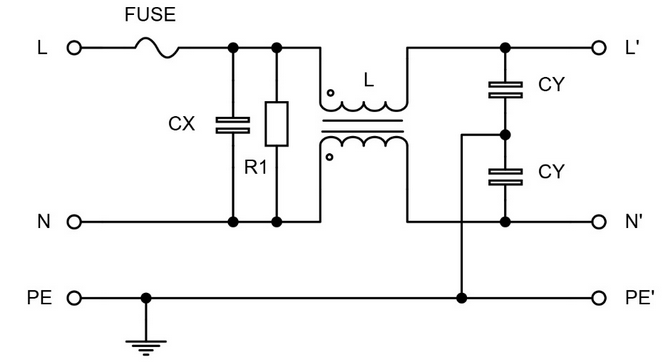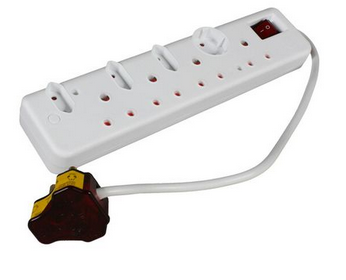Earth leakage trips when load shedding occurs only, no other time does it trip
Do you have lights going through your earth leakage?
In just about all these cases it is either because you have a problem already, or because you already have a very high standing loss and the additional disturbance of a grid outage just pushes it over the edge. And the process for solving it is the same as hunting for any other ground fault.
You have to find the reason for the leak. It is either a leak that shouldn’t be there (eg insulation breaking down), or it is a leak that is always there (EMI filters or surge protectors passing current to the neutral line). In the first case, you fix the leak. In the second case you split your loads over two RCDs.
There is little you can do yourself, since you need at least two pieces of equipment to go after this, 1) an insulation tester, 2) an RCD tester. Personally I swear by a good clamp meter (one that can measure the leakage current), but a good sparky can solve the problem without that.
If you have the entire house on only one RCD, and an insulation test cannot find a clear leak, I would just split the loads anyway. It adds a bit of future-proofing as well.
No, the lights are not thru the earth leakage.
Thanks Plonkster, one more question, the earth leakage does not trip when you physically swith of the main breaker to simulate load shedding, only when actual load shedding happens
Dropping mains doesn’t simulate load shedding. When load shedding starts, your inverter is trying to power the whole street for a split second before it shuts the relay.
Indeed, as @calypso says, the conditions are not the same. A grid outage tends to cause a much bigger dip in the voltage before your AC-coupled inverter disconnects from it, and at the risk of oversimplifying this, a change in voltage causes other components to pass more current. For example, a typical EMI filter will have these capacitors marked CY (picture from the linked article):

And those caps pass small amounts of current to the earth wire, an amount that is designed to be within the requirements of household RCDs, and during normal operation they cause no problem. But their job is to pass “common mode noise” to earth, and a big change in grid voltage happens to be one such kind of noise that isn’t exactly at 50Hz, and as such a small spike of current goes to earth… and the RCD objects.
Now getting back to the basics again. In the vast majority of cases, this little leaking through an EMI filter in some unknown appliance in your house, is not enough on its own to trip an RCD. It adds to an existing leakage that is already there, which can be anything from a few nanoamps to several milliamps. And to fix it, you have to find out where your leakages are, and that process is essentially the same whether you are looking for a real fault (an actual wet light socket, or a damaged wire), or if you’re just trying to figure out what circuits in your house has the appliances with high standing leakages.
Once you know what the problem areas are, you either fix the problem (eg, if there is an outside socket with water in it)… or… if you see that the leakage is acceptable, but you simply have too many appliances adding up to a standing leakage of more than 8mA or so (which is about halfway to the nuisance tripping point), then you need to split the circuits and give each half their own RCD.
I am reminded here of what @JacoDeJongh always says to me, that I don’t emphasise enough that you need to find the PROBLEM… so I am doing that now. Some problems are real problems (a real leak), and some are just appliances that need to be accommodated (like my German coffee machine, which has a 4mA leakage to earth if you can believe that). The process for finding it is the same.
As a home owner we sometimes try to find it ourselves, but in my experience (since the leak could be on the neutral side, which is not disconnected when you throw the breaker), you often end up wasting a lot of time with no progress. You need a good sparky to find it… someone who understands how all these things contribute.
I need to add something on to this. Take a look again at those caps marked CY. Now remember that under normal operation, N and PE are bonded together on the input side, so there is a much lower potential difference (voltage) across one of those capacitors, and essentially only one of them passes a small amount of current to earth (the one connected to live).
Now imagine what happens when the grid fails. First, the grid itself is disconnected, which leaves neutral unbonded for a split second. The two capacitors now create a series path, much like a voltage divider, with earth floating in the middle.
But then the bonding relay closes. Whatever charge is in the lower cap is now harshly discharged, while the upper cap now again sees the full 230V potential, again passing a small spike of current.
The switchover process is a noisy business… which is why you need to check your standing loss. If it is on the other side of 8mA… split it. You will save yourself a lot of nuisance tripping.
Excellent explination. Even I understand it but how do you fix it? Bigger cap?
Welcome Marck.
Not quite no.
There is a problem, to fix the equipment telling you that there is a problem, is not the fix. ![]()
A bigger cap will pass more current. No, there is nothing wrong with these filters, and we’ve known for a really long time that they do this. I remember at my first job, almost two decades ago, how having too many computers on the same circuit breaker would nuisance-trip the RCD, and in the big computer labs they had to keep that in mind: You can only have so many switch mode supplies per RCD.
In the last two decades, our houses have massively moved towards more such electronic loads… but most of them still have only a single RCD.
Now with that said… sometimes the solution is to REMOVE the surge arrestor/EMI filter, not because these devices are in themselves bad, but because of the cheap execution thereof in off-the-shelf stuff. This kind of extension for example:

It has a bunch of Neon lights in that red semi-translucent plug that passes current to earth. Add enough of these to your house, and it eventually starts to cause a problem.
I also once removed an EMI filter in an alarm system PSU, where it was placed before a large low-frequency iron transformer. Those EMI-filters are usually added to switch mode supplies to filter the noise created by the PSU… they are somewhat useless on an old iron transformer.
But… with all that said, these devices are designed to pass a small amount of current to earth, and that is not in and of itself a fault. You still have to find them, and then make a plan to get around the issue… and the process is the same as for finding any other earth fault.
When you do realise you have an appliance with a large leakage, you then have to decide if that is a fault with the appliance, or an engineer taking liberties. With my German Coffee machine, I figured it is the latter. I solved the problem by splitting my house over two RCDs.